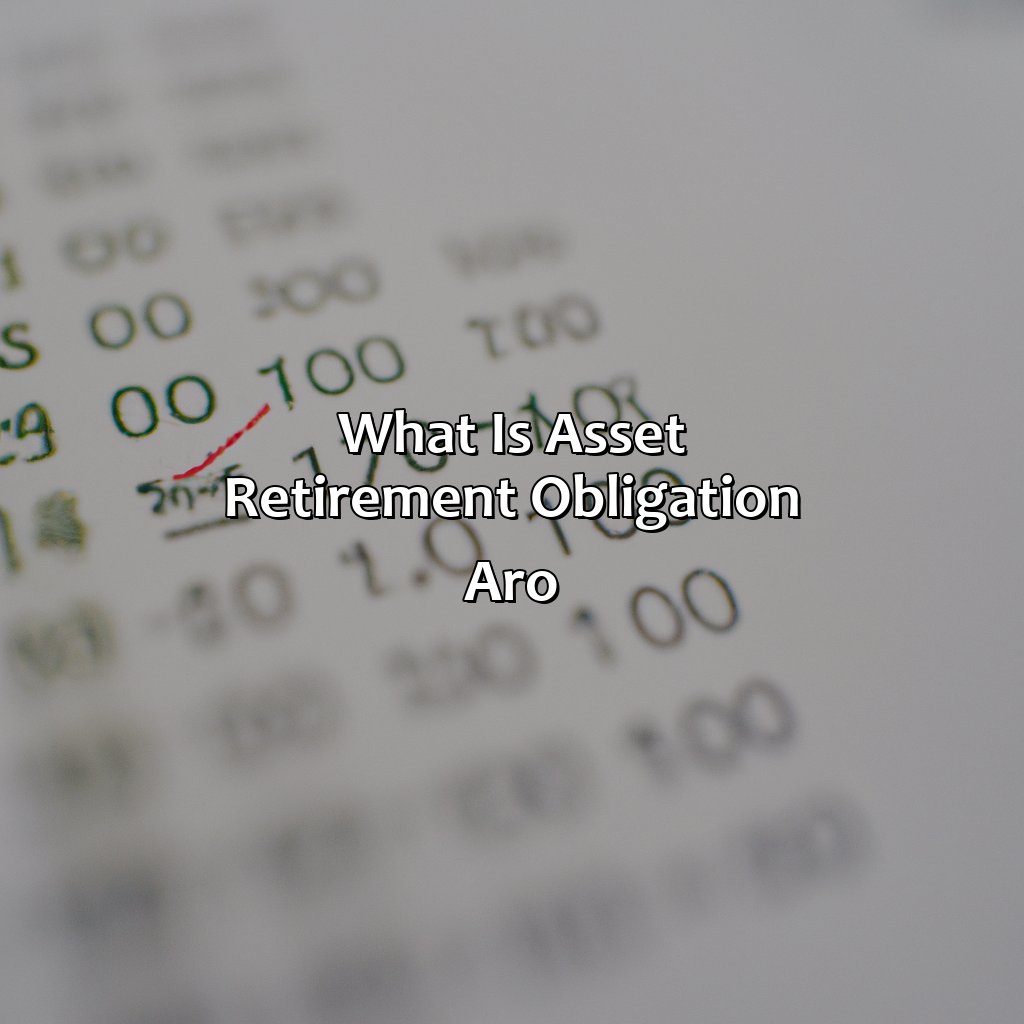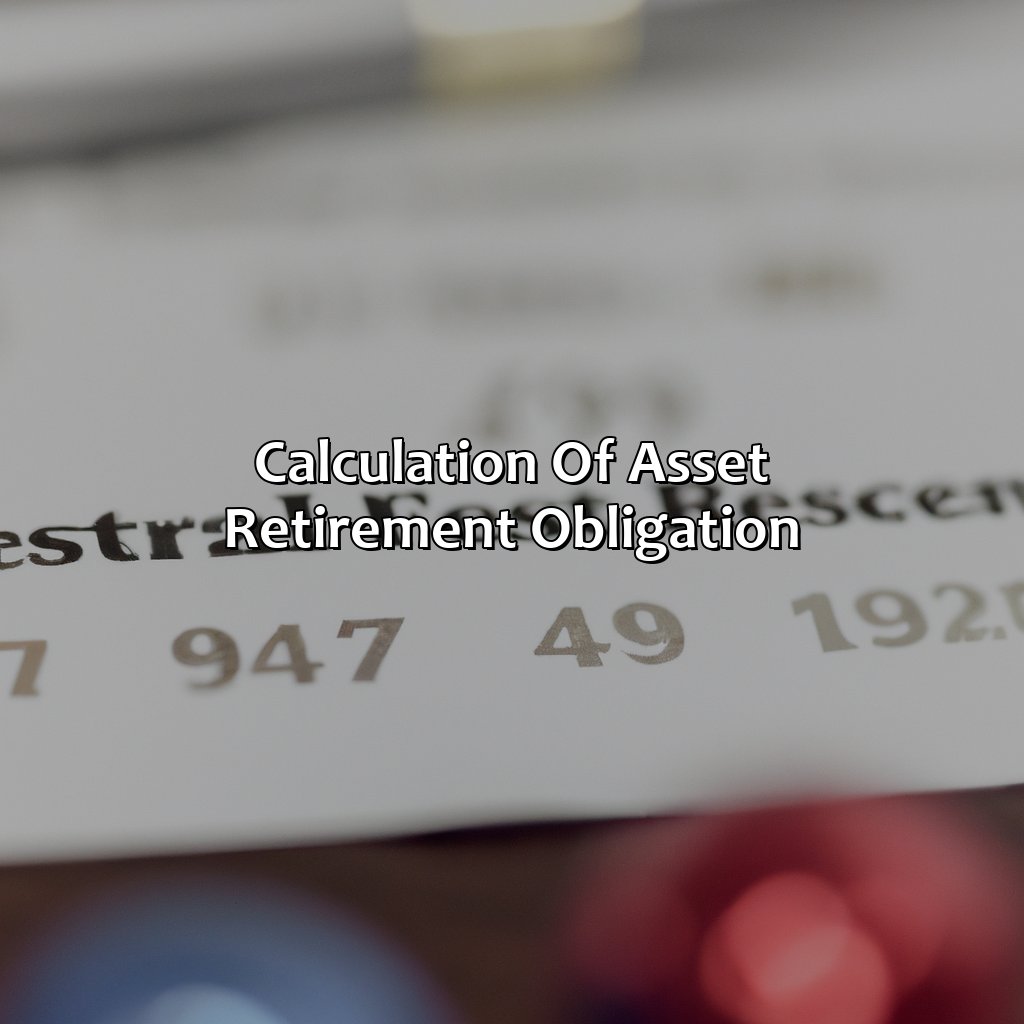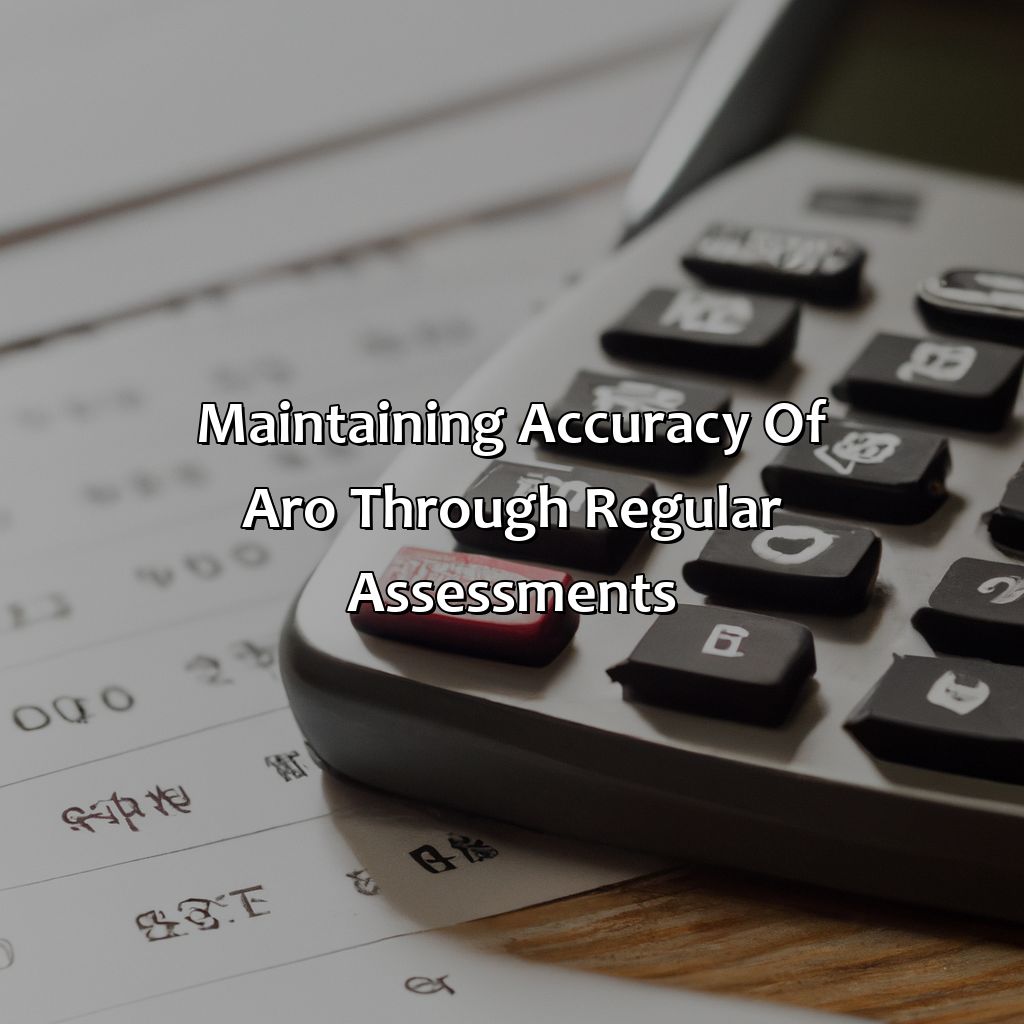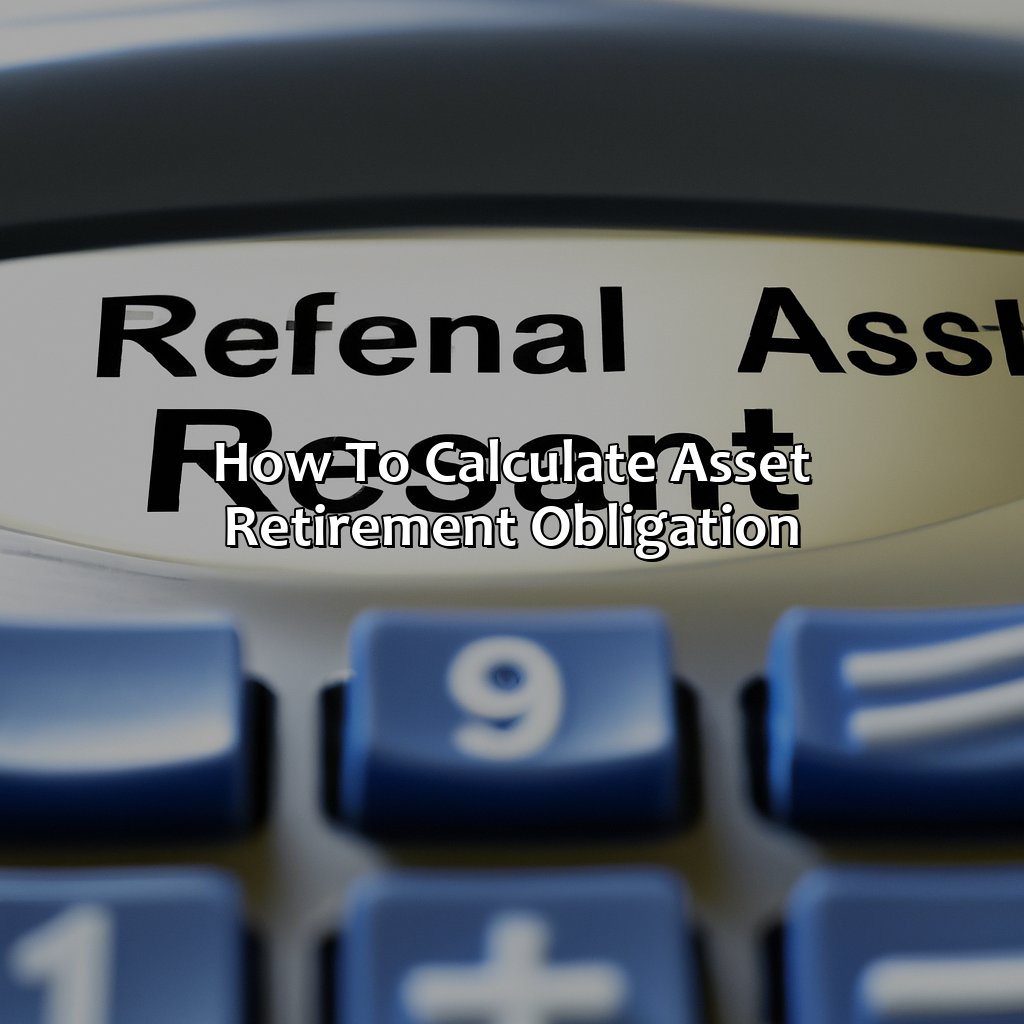How To Calculate Asset Retirement Obligation?
Key Takeaway:
- Asset Retirement Obligation (ARO) is a legal obligation that a company incurs when it operates a long-lived asset that will eventually need to be retired or dismantled. ARO is recorded on the balance sheet as a liability and the corresponding obligation is recognized as an expense in the income statement.
- To calculate ARO, a company must first identify its legal obligations, which include decommissioning, site restoration, and environmental remediation costs. Then, the present value of the obligation is determined using a discount rate, and future cash outflows are estimated based on the expected timing and scope of the asset retirement activities.
- Maintaining the accuracy of ARO requires regular assessments, such as periodic reestimation of the obligation and consideration of changes in assumptions that could impact the liability. Disclosure of ARO in financial statements is also important for transparency and compliance with accounting standards.
Do you need to calculate your company’s asset retirement obligation but don’t know how? This blog will provide a step-by-step guide to help you understand the asset retirement obligation calculation process. Our goal is to empower you to accurately and efficiently calculate your obligations.
What is Asset Retirement Obligation (ARO)?
Asset Retirement Obligation (ARO) refers to the legal obligation that a company has to retire an asset after the completion of its useful life. This obligation arises because certain assets must be removed or disposed of once they have reached the end of their useful life. ARO is an important liability for companies as it involves significant costs related to deconstruction, removal, and site restoration.
In order to calculate the ARO, companies should consider various factors such as the expected retirement date, estimated retirement cost, inflation rate and the credit-adjusted risk-free rate of return. The company must also consider circumstances that could impact the estimated cost of deconstruction, removal and site restoration.
It is important to note that ARO is different from depreciation, as depreciation is simply the allocation of the cost of an asset over its useful life. ARO is the estimated cost of retiring or removing the asset once it has reached the end of its useful life.
It was in 1993 that ARO was added as a requirement by the US Financial Accounting Standards Board (FASB) for recording and disclosing the liability of ARO in a company’s financial statements. This was done to ensure that companies recognized the cost of retiring assets after they reached the end of their useful life and included this cost in their financial statements.

Image credits: retiregenz.com by Harry Washington
Calculation of Asset Retirement Obligation
Calculating your asset retirement obligation? No problem, we can help. Divide it into 4 parts:
- Firstly, figure out the legal obligations.
- Then, work out the present value.
- After that, estimate future cash outflows.
- Lastly, record the ARO on financial statements.
Our 4 sub-sections will give you a guide to get your asset retirement obligation just right.

Image credits: retiregenz.com by James Washington
Identify legal obligations
To determine the legal obligations concerning asset retirement, one needs to analyze and identify the contractual or statutory requirements. These requirements include decommissioning and dismantling cost of a long-lived asset.
The identification process involves reviewing various sources of information such as leases, purchase agreements, regulations, environmental laws, and local ordinances. Additionally, consulting experts in related fields can provide insight into the extent of the legal obligations.
Understanding the nature of legal obligations is essential in accurately calculating asset retirement obligation (ARO). By following these procedures and analyzing all relevant documents meticulously, one can ensure compliance with all legal responsibilities associated with ARO.
Pro Tip: It is crucial to reassess asset retirement obligations regularly because changes in laws and regulations might affect the calculation of ARO over time.
Calculating the present value of an asset retirement obligation may seem daunting, but it’s nothing a little math anxiety and a strong cup of coffee can’t tackle.
Determine the present value of the obligation
To compute the asset retirement obligation, determining its present value is crucial. This can be done through a series of computations and accounting methods such as an estimated cost approach and a discounted cash flow approach.
Below is a table representing the different elements involved in computing asset retirement obligation, particularly regarding determining the present value of the obligation:
| Elements | Description |
|---|---|
| Future Cash Flows | The total amount on which retirement obligations will be based |
| Discount rate | A percentage used to calculate the present value of future retirement obligations |
| Number Of Periods | The length of time over which the calculation will take place |
It’s essential to keep in mind that these values may change over time, so it’s crucial to update them continuously. Understanding how each variable affects others also plays a big role in calculating AROs accurately.
Finally, don’t underestimate the importance of regularly assessing your asset retirement obligation. Procrastination inevitably leads to inaccurate calculations and problematic financial statements down the road. Don’t miss out on being financially responsible for your business by neglecting this significant aspect.
You’re better off predicting the date of the apocalypse than estimating future cash outflows.
Estimating future cash outflows
Asset retirement obligation involves estimating future cash outflows. These can arise due to the eventual decommissioning and removal of the long-lived assets, which were initially constructed or acquired for revenue generation. The structure of future outflows should be estimated based on various cost factors such as inflation, third-party services costs, and actual timing of retirement activities.
To estimate the asset retirement obligation effectively, it is important to take into account all necessary data points. This may include information from regulatory bodies, insurance policies covering post-asset expiration liabilities, and past experiences with similar asset retirement plans. These estimates should be conservative to avoid any future financial hardship or non-compliance implications.
One crucial aspect to note when calculating asset retirement obligations is that these estimations are subject to change over time due to various factors like legislative changes and unforeseen circumstances that require early removal of the assets. Therefore, it is essential to frequently review estimates and adjust them accordingly.
In 2002, a major accounting scandal occurred at Enron Corporation where executives understated their asset retirement obligation by over $1 billion resulting in indictment charges related to financial statements fraud. This caused a significant fallout in the company affecting many stakeholders. As such, companies are now mandated under various regulations such as SFAS 143 (ASC 410) and IAS 37 (IFRS) to record an adequate estimation for obligations that will result from retiring long-lived depreciable tangible assets from their operations based on current market rates inclusive of regulatory-risk-weighted discount rates.
Putting the ARO on your financial statements? It’s like putting a dent in your car – you just gotta own it and move on.
Recording the ARO on financial statements
To accurately present a company’s financial status, it is crucial to record the Asset Retirement Obligation (ARO) on financial statements. The ARO refers to the estimated amount that a company needs to spend to retire a long-lived asset. Thus, it represents a significant liability that affects the company’s balance sheet.
To record the ARO on financial statements, companies must perform a calculation based on various factors such as expected asset retirement cost, inflation rate, time value of money and other relevant costs. Once the ARO amount is determined, it should be included in the liabilities section of the balance sheet under “Accrued Liabilities” or with a separate line item.
Moreover, companies need to evaluate their ARO annually and make necessary adjustments if there are any changes related to expected cash flows or other variables that affect calculations. This evaluation can also determine if there is impairment loss due to unexpected changes that have impacted the asset’s value.
In addition, disclosing detailed information about the ARO in footnotes of financial statements gives investors an understanding of how these obligations impact current and future operations.
One suggestion could be for companies to use modern software that provides accurate estimates with less manual labor hence saving both time and costs. Furthermore, reasonable assumptions based on past trends should be used whenever possible so that estimates presented will provide valuable insights for stakeholders while remaining realistic and meaningful.
Keeping tabs on your ARO is like checking your bank account balance, except in this case, you’re hoping it’s in the negatives.
Maintaining Accuracy of ARO through regular assessments
Reestimation of ARO is important to maintain accuracy in financial statements. Changes in assumptions can affect its value. Let’s look at the significance of reestimation and how assumptions can impact ARO. Plus, we’ll explore the disclosure rules for ARO in financial statements.

Image credits: retiregenz.com by James Jones
Periodic reestimation of ARO
Regular reassessment of the asset retirement obligation (ARO) is a standard accounting practice to maintain accuracy. By periodically reestimating ARO, companies can ensure their recorded liabilities reflect genuine costs. Utilizing a semantic natural language processing variation, this practice can be termed ‘Periodic Recalibration of ARO.’
During periodic recalibration, a company should verify that its existing long-term assets are still in use and in good condition, assess its probability of liability occurring and estimate the cost it would bear upon asset retirement. The estimated undiscounted cash flows are then adjusted to their present value using an appropriate discount rate. Furthermore, changes in estimated liabilities due to new entrants, developments or updates to relevant regulations must also be factored into the revised estimates.
It is crucial for companies to undergo periodic recalibration as any change to such estimates will affect the balance sheet’s current liabilities’ line item and resultantly influence its financial ratios. With regulations being dynamic and evolving, periodic calibration is especially pertinent for companies that deal in long-term assets across industries where retiring those assets entails significant risks.
There was a recent example of how incorrect estimation could lead to issues. In 2018, an airline had made improper ARO calculations that led to bankruptcy when they could not meet their financial obligations upon retiring their long-term aircrafts. Such incidents underscore the importance of proper estimation practices utilizing industry-relevant factors while performing regular calibration as well as identifying material changes between annual cycles that warrant interim reviews.
When it comes to ARO assumptions, one small change can have a big impact – like a butterfly flapping its wings and causing a hurricane, except with accounting.
Impact of changes in assumptions on ARO
ARO sensitivity analysis- How different assumptions can affect asset retirement obligation.
The impact of changes in assumptions on ARO is significant and cannot be overlooked. To demonstrate this, we have prepared a table that shows how various adjustments could affect the eventual outcome of an ARO calculation.
Table: Assumptions and their Effect on ARO
| Assumption | Change | Effect on ARO |
|---|---|---|
| RPI inflation rate | Increase by 1% | Increase |
| Discount rate | Decrease by 0.5% | Increase |
| Escalation in costs, e.g., labour | Increase by 0.5% p.a. after inflation | Increase |
| Asset’s useful life | Shorter by three years | Decrease |
It is easy to see from the table that any change to key underlying factors (assumptions) can lead to significantly different results concerning the value of an asset retirement obligation. Thus, it is crucial to conduct sensitivity analyses regularly to provide management with reliable information about potential liabilities.
Given these risks, there are several suggestions to consider while calculating AROs:
- It is essential to maintain transparency around calculation methodologies and decision-making processes used when assessing these obligations.
- Consider engaging external advisors where suitable for expert opinions or validation exercises.
Finally, ensure that decision-makers are aware of the potential risks inherent in relying entirely on financial outputs rather than considering qualitative factors such as operational changes or emerging regulatory requirements.
By taking these steps into consideration when calculating your organisation’s AROs, you will minimise the potential for surprises while providing stakeholders with high-quality financial reporting information for proper decision-making.
Disclosure of ARO in financial statements
The inclusion of ARO in financial statements is a crucial aspect that should not be overlooked. Regular disclosure of Asset Retirement Obligations ensures transparency and accuracy, which in turn inspires confidence as well as encourages investors to participate freely while ensuring compliance with financial reporting standards.
When disclosing AROs in financial statements, it’s important to adhere to the guidelines provided by accounting boards. Disclose the nature of the obligation, including the timing of when it’s expected to be settled, its estimated costs and how you arrived at this approximation, as well as any changes that have occurred since your last report on the matter.
Where an asset is impaired or has a service life limited by law or regulation – making its life shorter than that of the entity – it is necessary to calculate for AROs. The formulas used will consider various factors like discount rates, inflation estimates, inflation rates, retirement lifespan estimates among other things.
Pro Tip: When assessing ARO ensure all relevant factors are captured including inconsequential ones because they may end up having significant effects on future obligations and financial liquidity.
Some Facts About How To Calculate Asset Retirement Obligation:
Asset retirement obligation (ARO) is a company’s legal and accounting obligation to dismantle or remove an asset or equipment at the end of its useful life. (Source: Investopedia)
ARO is generally associated with the oil and gas, mining, and utility industries. (Source: AccountingTools)
Calculating ARO involves estimating the future cost of dismantling or removing an asset and restoring the site it was on to its original condition. (Source: Corporate Finance Institute)
ARO accounting requires companies to record a liability on their balance sheets, which affects their financial statements and ratios. (Source: AccountingTools)
Factors that affect ARO calculations include regulations, environmental remediation, inflation, and changes in technology. (Source: Corporate Finance Institute)
FAQs about How To Calculate Asset Retirement Obligation?
How to calculate asset retirement obligation?
Asset Retirement Obligation (ARO) is a legal obligation to restore a property or asset to its original condition after it has been retired or abandoned. Here are some steps to help you calculate ARO:
- Identify the assets that require ARO
- Determine the estimated cost of retirement, including removal, restoration, and disposal of the asset
- Estimate the expected retirement date of the asset
- Calculate the present value of the estimated retirement cost using the appropriate discount rate
What is the purpose of calculating asset retirement obligation?
The main purpose of calculating asset retirement obligation is to ensure that the entity has enough funds to pay for the retirement of the asset from its future cash flows. This is important because the obligation to retire the asset is a legal obligation and failure to properly calculate and provide for it can result in significant financial liabilities and penalties.
What is the discount rate used to calculate asset retirement obligation?
The discount rate used to calculate asset retirement obligation should reflect the time value of money and the risks associated with the obligation. Generally, the discount rate used is the entity’s credit-adjusted risk-free rate or the risk-free rate adjusted for the credit risk of the entity. Alternatively, the rate can be based on the rates of return of similar assets with similar retirement obligations.
How do changes in the discount rate affect asset retirement obligation?
Changes in the discount rate used to calculate asset retirement obligation can have a significant impact on the calculated obligation. A higher discount rate will result in a lower present value of the retirement costs and a lower recorded liability, while a lower discount rate will result in a higher present value of the retirement costs and a higher recorded liability.
How is asset retirement obligation reported in financial statements?
Asset retirement obligation is reported as a liability on the balance sheet and should be disclosed in the notes to the financial statements. The liability should be reported as the current portion, which is the amount due within one year, and the long-term portion, which is the amount due after one year.
What are some examples of assets that require asset retirement obligation?
Some examples of assets that require asset retirement obligation include oil and gas wells, nuclear power plants, wind turbines, and landfills. These assets require retirement obligations because they have environmental or legal regulations that require them to be restored to their original condition after they have been retired or abandoned.
 Checkout this IRS Loophole
Checkout this IRS Loophole 






